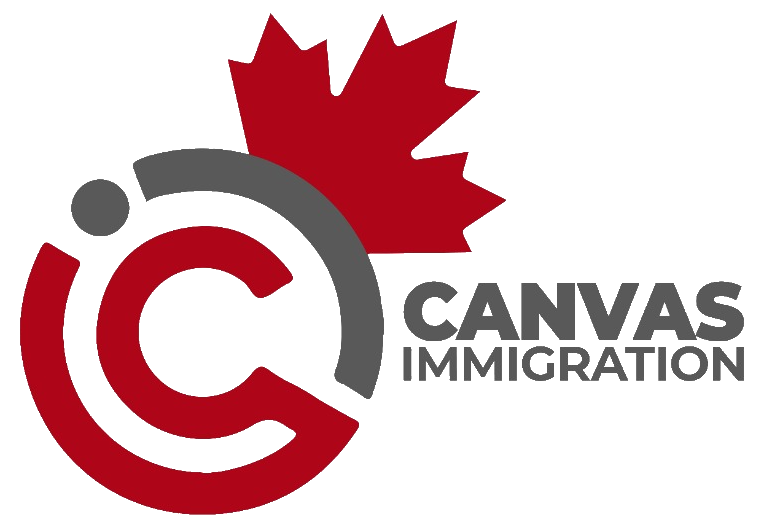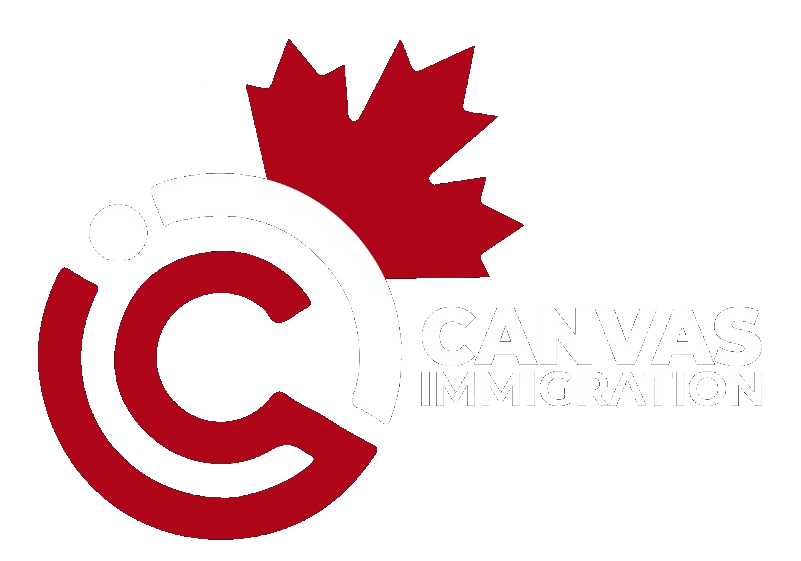Your Pathway to Canada Starts Here. Trusted Immigration Consultants in Mississauga
For several years, we’ve guided families, professionals, and students from Mississauga, Toronto, and across South Asia through Canada’s immigration programs. As Regulated Canadian Immigration Consultants (RCIC), we turn complex processes into success stories—one visa, permit, and PR application at a time.
Why Choose Us?
Licensed by the College of Immigration and Citizenship Consultants (CICC)
98% Success Rate Across 5,000+ Applications
Free Eligibility Assessments & Transparent Pricing
Local Offices in Mississauga – Walk-Ins Welcome!
Why Thousands Trust Us as Their Canadian Immigration Partner
At Canvas Immigration, we’re not just consultants—we’re your advocates. As Regulated Canadian Immigration Consultants (RCIC) based in Mississauga, Ontario, we’ve spent over 10 years navigating the intricacies of IRCC policies, provincial programs, and visa pathways. Our team of licensed professionals has personally guided 100+ clients from the Greater Toronto Area (GTA), India, Pakistan, Bangladesh, and Sri Lanka to successful outcomes—from study permits to permanent residency.
Why We Stand Out:
- First-Hand Expertise: We’ve walked the same path as our clients. Many of our consultants are immigrants themselves, with deep-rooted ties to South Asian communities.
- RCIC Certification: Licensed by the College of Immigration and Citizenship Consultants, we adhere to the highest ethical and legal standards.
- Zero Empty Promises: Unlike unregistered “consultants,” we never guarantee approvals—we earn trust through transparency and results.
Are consultant fees for Canada immigration worth it?
We offer free eligibility assessments and fixed-fee packages—no hidden charges. With a 98% success rate across Express Entry, Provincial Nominee Programs (PNP), and family sponsorships, we turn uncertainty into confidence.
Discover why we’re ranked among the best Canada immigration consultants in Mississauga
Comprehensive Immigration Solutions
At Canvas Immigration, we specialize in transforming aspirations into action. Whether you’re a student in Pakistan or India seeking a study permit, a tech professional in Canada applying for a family reuniting through sponsorship, our RCIC-licensed team delivers end-to-end guidance.
Canada Immigration Programs
Express Entry
Maximize your CRS score with strategies tailored for IT professionals, healthcare workers, and skilled tradespeople.
Provincial Nominee Program (PNP)
Ontario-focused pathways for Canadian residents and global applicants targeting high-demand sectors.
Atlantic Immigration Program (AIP)
Settle in Nova Scotia, New Brunswick, or Newfoundland with employer-backed sponsorship
Caregiver Visa
Secure permanent residency through Canada’s Home Child Care Provider Pilot.
Temporary Resident Visa (TRV)
Visitor visas, super visas, and extensions for families across the GTA and South Asia.
Work in Canada
LMIA-Based Work Permits
Navigate Labour Market Impact Assessments with employers in Toronto’s tech and healthcare sectors.
Post-Graduation Work Permit (PGWP)
Transition from Canadian classrooms to careers—retain top talent in Ontario.
Bridging Open Work Permit (BOWP)
Maintain your status while awaiting PR approval.
International Experience Canada (IEC)
Young professionals from India, Pakistan, and beyond: Work and explore Canada
Study in Canada
Study Permits
Secure admission to top colleges with SDS (Student Direct Stream) support.
Work While Studying
Balance part-time jobs and academics—we handle the legalities.
Study Permit Renewals
Avoid gaps in your education journey with timely extensions.
Business Immigration
Start-Up Visa
Launch your innovative venture in Canada with federal endorsement.
Quebec Investor Program
rench-language resources for high-net-worth applicants.
Self-Employed Program
Artists, athletes, and entrepreneurs: Showcase your impact on Canada’s cultural fabric.
Family Sponsorship
Spousal Sponsorship
Reunite with your partner—even with complex cases like arranged marriages.
Parent/Grandparent Sponsorship
Bring your family to Mississauga with income-proof guidance.
Why We’re the Trusted Choice for Canada & Global Clients.
Navigating Canada’s immigration system demands more than paperwork—it requires a partner who prioritizes your success. Here’s why hundreds of clients fron all over the world rely on us
- Regulated & Ethical Expertise:
As CICC-licensed consultants we operate under strict IRCC guidelines. No shortcuts, no false promises—just proven strategies. - Unmatched Success Rates:
- 98% approval rate for Express Entry, Study Permits, and Work Permits.
- 1,000+ PGWP approvals for international students in Ontario.
- 500+ families reunited through spousal and parent sponsorships.
- Transparent Pricing, Zero Surprises:
Worried about “consultant fees for Canada immigration”? We offer free eligibility assessments and fixed-fee packages—no hidden costs. - Multilingual & Culturally Attuned:
We break language barriers with in-house support in Hindi, Urdu, Punjabi, Tamil, and Bengali.5. Local Roots, Global Reach:
Our Mississauga office serves the GTA, while our virtual consultations empower clients all over the world to start their Canadian journeys.
Hear From Clients Who Found Canvas Immigration The Best Immigration Consultants
Don’t just take our word for it—see why clients across all over the world call us their trusted partners.
Trustindex verifies that the original source of the review is Google. I had an outstanding experience working with Hina on my mother-in-law's Visa/PR application. She took the time to understand the unique details of our case and provided clear, practical advice that others couldn't offer. What impressed me the most was Hina's patience and her ability to explain every detail in a way that was easy to understand. Her guidance gave me immense peace of mind about the next steps and how to move forward with them. Thanks to Hina's expertise and unwavering support. I highly recommend Hina to anyone seeking assistance with visa or immigration matters — she truly goes above and beyond for her clients!Trustindex verifies that the original source of the review is Google. Exceptional service! Canvas Immigration & Consultancy made my application immigration process seamless and stress-free. Their team's expertise, prompt communication, and attention to detail were remarkable. I felt supported and well-informed throughout. Professional, knowledgeable, and always responsive. They went above and beyond to ensure accuracy and success. I highly recommend it to anyone navigating the complexities of immigration. A top-notch consultancy service! Thanks.Trustindex verifies that the original source of the review is Google. We had a great experience working with Canvas. We received student visa approval. Hina is highly committed and diligent with her work. She guided us throughout the process and helped us at every step. Our case was complex but with her expertise, we are able to secure visa. I would highly recommend Canvas to anyone looking for immigration, or various visa applications to Canada. Thank you Hina!Trustindex verifies that the original source of the review is Google. Excellent service with no compromise in professionalism.Trustindex verifies that the original source of the review is Google. Hina has been an incredible help throughout my PR application process. She's been able to answer all questions and solve any issues that came up. Thank you so much, Hina!Trustindex verifies that the original source of the review is Google. Great guidance and support, would definitely recommend! 👍👍Trustindex verifies that the original source of the review is Google. We had a great experience with Canvas. My brother and his wife received their PR visas successfully. Hina is very responsive, and keeps her clients updated on the progress regularly. She is always on top of things and available to answer any immigration related questions. I would highly recommend them.Trustindex verifies that the original source of the review is Google. I am impressed with the professionalism shown by them. I received regular updates and guidance and always find them responsive to any questions/queries.Trustindex verifies that the original source of the review is Google. Great service! It was very easy to talk to them and they were always available to answer any of my questions. Everything was done in a timely manner, I highly recommend them.
News & Alerts
why canvas immigration
Specialization
We guide them effectively so that they can effortlessly immigrate to Canada, knowing everything about the processes and results of their efforts from the beginning to the end.
Putting Clients First
Canvas Immigration strongly upholds the principle of client satisfaction. Developing a two-way relationship with our clients positively influences the immigration experience and that is all we aspire to secure.
Commitment
The word when read is just a two-syllabled word, but for us it is one of our core values that we abide by. Once the client conveys his intentions to us, we begin to channelize all our efforts into accomplishment of their objectives.
Flag-bearer of Diversity
We believe that everyone who fulfils the requirements for immigration to Canada should be entitled to all the information and services necessary to further his/her immigration process.

